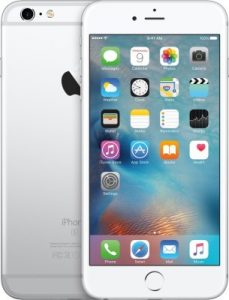For years, Apple vowed not to break into the phablet market, but in 2014, with the popularity of “big screen” phones, they met the demand and we were introduced to the iPhone 6 Plus.
It was so well received that within a year, the iPhone 6s Plus was released, boasting exciting features such as 3D Touch technology.

The iPhone 6 S Plus’s 5.5” screen is the basis of its appeal, but for many, also its downfall – portability becomes questionable, leaving users wondering if a phablet is actually better than the iPhone 6s.
It looks identical to the 6s, but there have been upgrades under the hood; the biggest being the addition of 3D Force touch technology. It’s essentially a pressure-sensitive shortcut system to allow you to perform tasks more quickly. For example, you no longer have to launch the camera app to take a selfie – it can be accessed straight off the home screen.
With Samsung’s grasp on the phablet market, it was inevitable that Apple would answer the call from fans and challenge their Android rivals.
Key specs
- 5.5” LED-backlit IPS LCD, capacitive touchscreen
- Resolution: 1080 X 1920 pixels
- Protection: Ion-strengthened glass, oleophobic coating
- 12 MP, phase detection autofocus, OIS, dual-LED (dual tone) flash
- 5 MP, 1080p@30fps, 720p@240fps, face detection, HDR, panorama
- iOS 9, upgradable to iOS 10.0.2
- Apple A9 chipset
- Dual-core 1.84 GHz Twister
- No card slot
- 2 GB RAM 16/64/128 GB storage capacity
- Non-removable Li-Ion 2750 mAh battery
- Bluetooth: 2, A2DP, LE
- USB: v2.0, reversible connector
- Up to 24 h (3G) talk time
Pros: Big screen; rich-colour display; great camera; 4K video recording; 3D Touch Technology
Cons: Expensive; heavy and bulky; minor software flaws; no wireless charging; no card slot; not available in 32 GB onboard memory
Verdict: 8/10




